Welcome Blessings!
(Tap 🔽 to see more topics!)
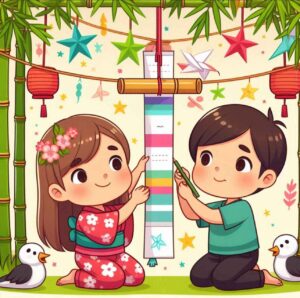

If you’re living or working in Japan as a foreigner, you might be interested in learning more about the country’s culture and traditions. One way to do that is by joining in on the fun during their festivals and holidays. Not only are these events colorful and exciting, but they’re also educational and meaningful. You’ll better understand Japan’s history, nature, and community by participating. In this article, we’ll share some of Japan’s most remarkable and unique festivals and holidays and offer tips on how to enjoy them as a foreigner without feeling left out.
Japan has a rich and diverse culture expressed through its festivals and holidays, known as “matsuri.” These events are held throughout the year, each with significance and charm. Some of the most essential and exciting festivals and holidays that you should know and join are as follows;
New Year’s Day
Celebration: Oshogatsu is Japan’s most important holiday from December 31 to January 3. It is a time to welcome the new year with family, friends, and good wishes. People enjoy traditional foods, such as soba noodles, mochi rice cakes, and osechi ryori (a special bento box with various dishes). They also worship at shrines and temples for health, happiness, and prosperity. One of the highlights of Oshogatsu is the Emperor’s New Year Greeting, which is held on January 2 at the Imperial Palace in Tokyo. It is one of the only days in the year when the public can enter the palace grounds and see the Emperor and his family.
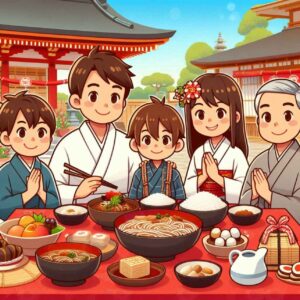
How to Celebrate: As a foreigner, you can join the Oshogatsu celebration by visiting a local shrine or temple, trying some traditional New Year’s foods, and sending nengajo (New Year’s greeting cards) to your Japanese friends and colleagues. You can also watch the Emperor’s New Year Greeting on TV or online or try to get a ticket to see it live if you are lucky.
The Bean-Throwing Festival
Celebration: Setsubun is held on February 3 or 4, depending on the region. It marks the end of winter and the beginning of spring. The central ritual of Setsubun is mamemaki, which means throwing roasted soybeans to ward off evil spirits and bring good luck. People usually do this at home, shrines, and temples while chanting “Oni wa soto! Fuku wa uchi!” (Out with the demons! In with the fortune!).
Some people also wear masks of oni (demons) and scare children who throw beans at them. Another custom of Setsubun is eating eho-maki, a long sushi roll with seven ingredients representing the seven gods of fortune. It is said that one should eat the whole roll in silence while facing the lucky direction of the year.
How to Celebrate: You can enjoy attending a Setsubun event at a temple or shrine. You can join the mamemaki ritual, shout out loud to scare away the demons, and taste some eho-maki. You can also make your mask or buy one from a store.
Cherry Blossom Viewing
Celebration: Hanami is one of Japan’s most popular and beautiful festivals. It takes place from late March to early April, depending on the region and the blooming of the cherry blossoms (Sakura). Hanami means “flower viewing,” and it involves enjoying the sight of the delicate pink flowers that symbolize the transience of life.
People often have picnics with food, drinks, and music under the cherry trees. Some of the best spots for Hanami are Ueno Park in Tokyo, Maruyama Park in Kyoto, Hirosaki Park in Aomori, and Yoshino Mountain in Nara.
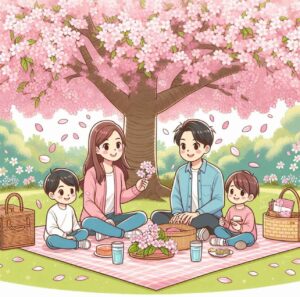
How to Celebrate: Invite your friends for a hanami picnic in a local park or garden. You can bring some traditional Japanese snacks and drinks, such as sakura mochi (rice cake wrapped in cherry leaf), dango (sweet dumplings), sake (rice wine), or green tea. You can also enjoy taking photos of the Sakura or painting them.
Celebration: Golden Week is a series of four national holidays that occur within a week at the end of April and the beginning of May. They are Showa Day (April 29), Constitution Day (May 3), Greenery Day (May 4), and Children’s Day (May 5). Golden Week is the peak travel season in Japan, as many people take advantage of the long vacation to visit their hometowns or go on trips within or outside Japan.
Some of the events that take place during Golden Week are the Hakata Dontaku Festival in Fukuoka, which features colorful parades and performances; the Takayama Spring Festival in Gifu, which displays elaborate floats called yatai; and the Koinobori Festival in Gunma, which flies carp-shaped streamers called koinobori to celebrate children’s growth and happiness.
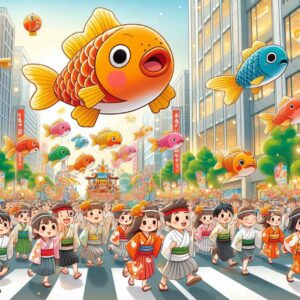
How to Celebrate: During Golden Week, you can travel around Japan and visit local attractions and festivals. You can also enjoy traditional foods and crafts associated with each holiday, such as Kashiwa mochi on Children’s Day or origami (paper folding) on Greenery Day.
The Star Festival
Celebration: On July 7, Tanabata celebrates the meeting of two star-crossed lovers, represented by the stars Vega and Altair. Legend has it that the Milky Way keeps them apart and can only reunite them once a year on this auspicious day. People write wishes on colorful paper strips called tanzaku and hang them on bamboo branches. They also decorate their streets and houses with paper ornaments such as stars, cranes, and streamers. Some of the most famous Tanabata festivals are in Sendai, Hiratsuka, and Shonan.
How to Celebrate: Join the Tanabata celebration by writing your wish on a tanzaku and hanging it on a bamboo branch. You can also attend a local Tanabata festival and enjoy the lively atmosphere and the dazzling decorations.
The Festival of Souls
Celebration: Obon is a Buddhist festival that honors the spirits of one’s ancestors. It is usually observed from August 13 to 15. During Obon, people return to their ancestral homes and visit their family graves to clean them and offer flowers, incense, and food. They also light lanterns and candles to guide the spirits back to their homes. Obon is also a time to enjoy dancing, music, and fireworks. One of the most famous dances is Bon Odori, which varies from region to region but generally involves people wearing yukata (summer kimono) and dancing in a circle around a stage or a tower.
One of the most spectacular sights of Obon is Toro Nagashi, which means floating lanterns. In this ceremony, people write messages or prayers on paper lanterns and release them on rivers or seas to send off their ancestors’ spirits.
How to Celebrate: As a foreigner, you can participate in Obon by attending a lantern festival or a Bon Odori event. You can write your message or prayer on a lantern and release it on the water or in the sky. Visit a cemetery with a Japanese friend or host family and learn about their ancestors and traditions.
Celebrating Children’s Growth
Celebration: Shichi-Go-San is a traditional rite of passage for children three, five, or seven years old. It is celebrated on November 15 or around that date. The origin of Shichi-Go-San dates back to the Heian period (794-1185) when aristocratic children were formally presented at the imperial court at these ages. Nowadays, parents take their children to shrines to pray for their health and growth and dress them in unique clothes, such as kimono, hakama (pleated pants), or Western-style suits and dresses. The children also receive a candy called chitose-ame, which means thousand-year candy. It is a long and thin red and white candy that symbolizes longevity and good luck.
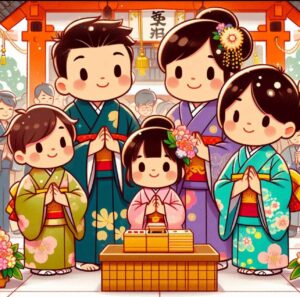
How to Celebrate: Attend a local Shichi-Go-San ceremony with your Japanese friends or host family with children of these ages. Also, you can dress them in traditional attire or help them choose their outfits. Similarly, you can take photos of them at the shrine or give them chitose-ame as a gift.
Celebration: Christmas is not a religious holiday in Japan but is widely celebrated as a romantic and commercial occasion. During the holidays, people give and receive gifts, decorate their homes, and indulge in favorite foods. New Year’s Eve, on the other hand, is a solemn and spiritual event, as people ring temple bells 108 times to purify themselves from the 108 worldly desires. They also watch the countdown shows on TV or join the parties in the city.
How to Celebrate: Enjoy Christmas in Japan by going on a date with your partner, shopping for presents, or visiting the illuminations that light up the streets and parks. You can also try some Christmas foods, such as strawberry shortcake or Kentucky Fried Chicken. For New Year’s Eve, you can visit a temple or shrine to hear the bell ringing and make a wish for the new year. You can also watch the fireworks or join the crowds at Shibuya Crossing or Tokyo Tower.
Japan isn’t just about stunning temples and delicious ramen. It’s a living, breathing tapestry of incredible festivals and holidays waiting for you! Imagine scribbling your wishes onto colorful tanzaku under the starry sky of Tanabata or raising a toast with friends beneath a blizzard of delicate cherry blossoms during Hanami. Each celebration isn’t just an event. It’s a colorful story, a chance to connect with Japan’s soul, deep-rooted history, breathtaking nature, and the warm hearts of its people.
Forget the tourist traps for a day and throw yourself into the local festivities. Trust me, these moments are the stories you’ll tell for years. It’s the ultimate backstage pass to experience this fantastic country’s magic genuinely. Go on, embrace the matsuri spirit! Until our next adventure, sayōnara for now!